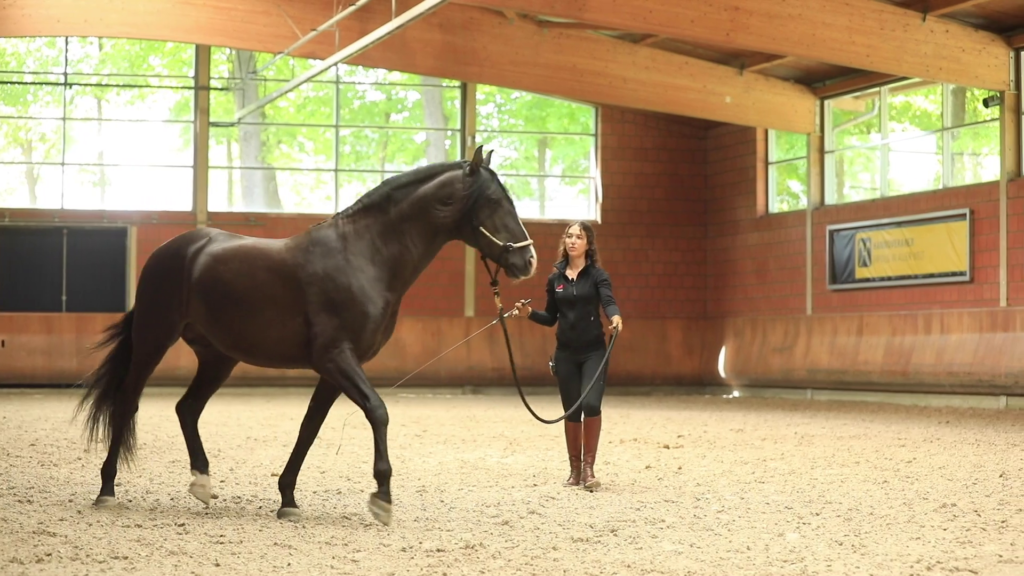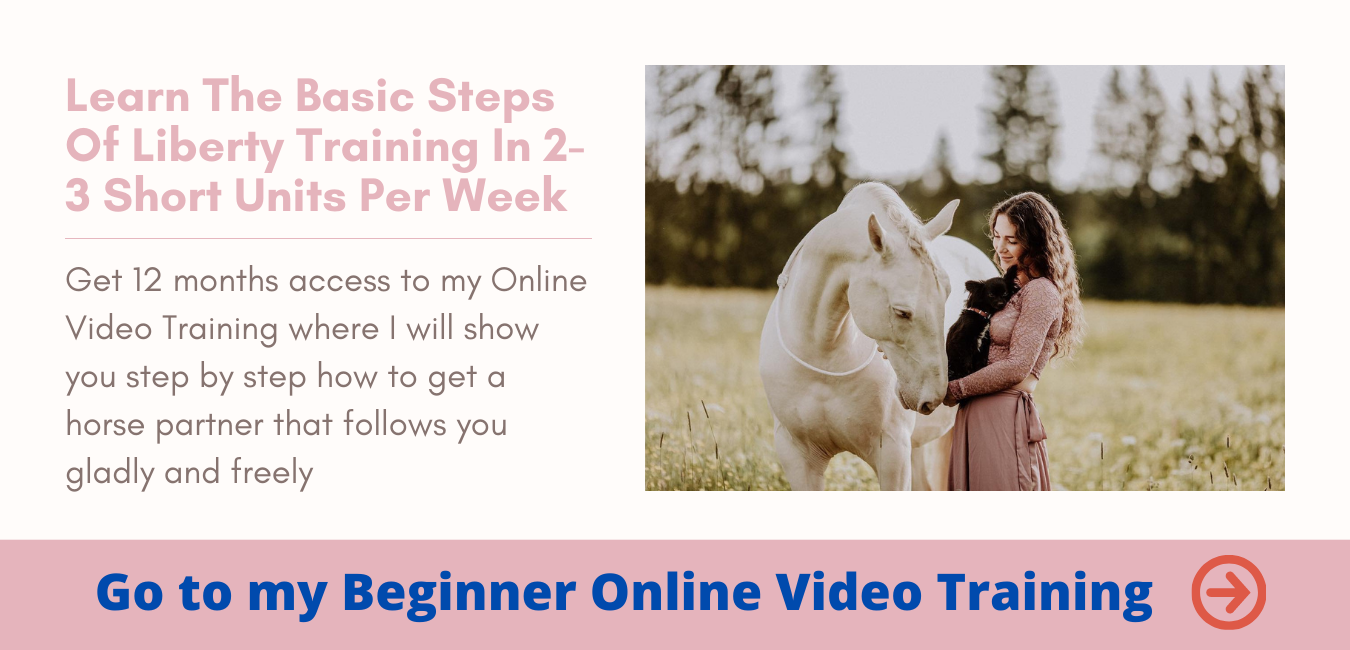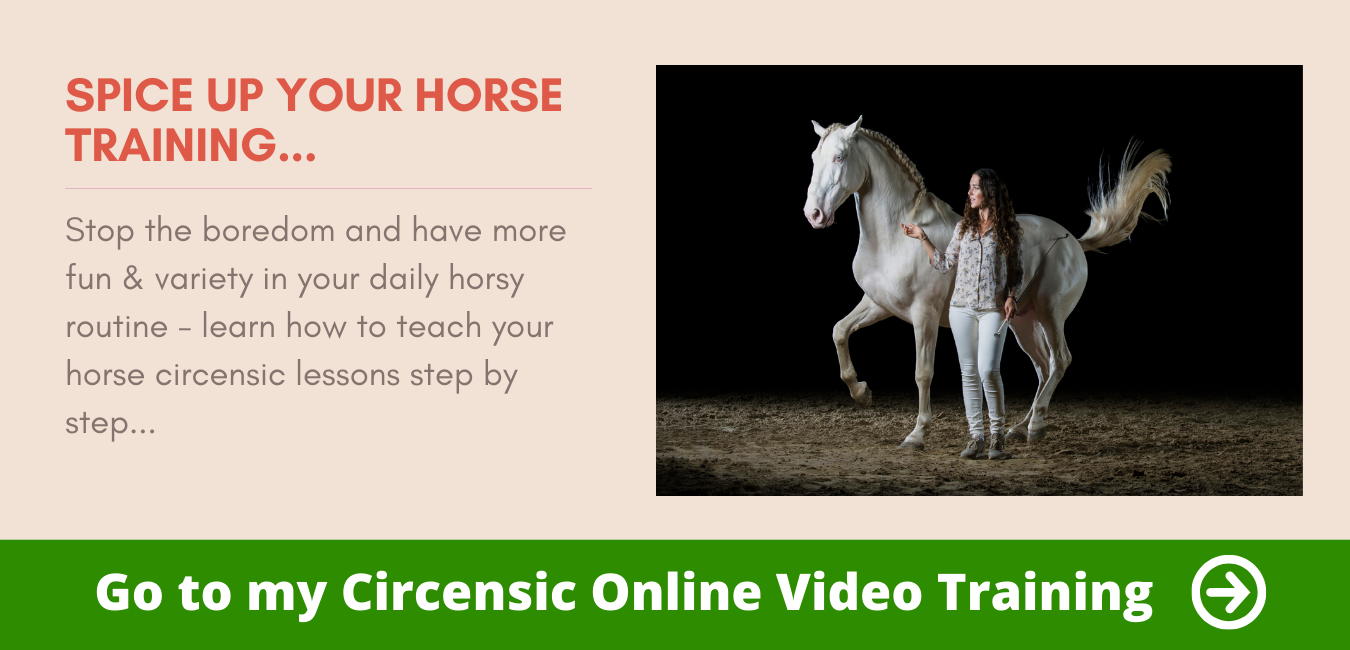Today I want to explain more in detail how I make sure that my horses not only build up muscles but also find their balance in general.
Working gymnastically – why?
Maybe you are still wondering why you should work on your horse running “correctly” – and what does that actually mean?
The most important advantages are quite obvious: If you strengthen the “correct” muscles of your horse, it can carry you longer and, above all, in good health.
After all, it is not necessarily natural for horses to walk around with a rider and his weight on their back ? So it helps if we teach our horses how to do this as gently as possible. After all, this was probably not “originally intended”.
Apart from that, your horse will also gain in self-confidence through correct training. It is essential for an escape animal to feel safe on its feet – and thus to be able to escape from danger at any time.
If the rider brings the horse out of balance due to his weight and he regularly loses his balance, the horse is no longer able to do so. Even if today there is no longer a predator lurking behind every bush, this is a burden for your horse that should not be underestimated – physically but also mentally.
It only brings your horse advantages if you make sure that he is “in balance”, even if this means a lot of work for you.
Not only do you have to learn how to teach your horse the correct posture and form of movement in a motivating way, you also have to train your eye to learn to distinguish between “right” and “wrong”. Unfortunately, “head down” is not enough – this is not necessarily a “forward-down”.
But now slowly and from the front ?
The correct forward/backward
Lunging or riding in the “forward-downward” posture is in almost all riding styles the fundamental basis that must be established before at some point, perhaps, the rider will move towards the assembly.
The main goal is, in simple terms, that the horse lets its neck fall and thereby builds up a tension arch over the neck, back and hindquarters, which ensures that the rider is no longer supported by the skeleton (i.e. the horse’s spine) but by muscle power.
This sounds a bit abstract, so I try to describe the picture a bit clearer: The horse should walk with its nose approximately at the level of the nose joint, the nose in front of or at the vertical, the back arched up and in addition to this, it should step diligently under with the hindquarters.
This means that the hind legs should be kicked far forward and thus carry “more load”, i.e. more weight of the horse.
When standing, the forehand carries about 60% of the body weight and the hindquarters only 40%. If we then sit on our horses this ratio shifts even further.
So it makes sense to strengthen the horse’s hindquarters to counteract this – and to train the abdominal and back muscles accordingly from the ground. A horse needs not only back muscles to carry the rider and to arch its back, but above all its stomach muscles!
Therefore, it usually does not help to “press” the horse’s head into “a form” with binders, even if I sometimes use them especially at the beginning of training. So it helps to train the eye, because even “with the head down” a horse can push the back away or train its lower neck.
Therefore, in the following I would like to introduce you to a few exercises that help me to train my horses correctly – and thus provide more balance and suppleness.
Circles for muscle building
Probably the most proven method of building up the muscles is certainly lunging. Or circling, as I call it in the context of my liberty training. But this has nothing to do with stupid running in circles – because you can also encourage and challenge your horse both physically and mentally.
A good way to keep the horse “awake” and motivated is to incorporate many different exercises and vary them again and again. This way the horse has to concentrate and stay with you to find out what you want him to do next.
For example, there are many transitions – and they are also good for balance and for pushing the horse from behind. Especially trotting or cantering is quite exhausting for your horse, because it has to take more weight on the hindquarters.
So this trains the muscles and in the long run makes the horse more light and smooth.
Often the cause for imbalance is not the balance of your horse, but the lack of muscle.
Also poles over which your horse has to walk can help here. Because by lifting your horse’s feet even higher and putting them down in a controlled manner, not only his coordination is improved, but also the hindquarters and abdominal muscles are strengthened.
Lets go!
But what to do now when the horse holds on and just doesn’t “let go”? Side walks in any variation can help here! The most sensible exercises are of course those such as the shoulder walk or croup walk. Especially on the cavesson you can make sure that your horse starts to bend and stretch by slightly stepping over it.
In order to mobilize both forehand and hindquarters in advance, it is often helpful to ask forehand or hindquarters turns while standing. It is important that you can move the forehand and the hindquarters separately from each other and that the turn is not somewhere in the middle of the horse.
Apart from loosening up your horse, this can also be a great way to prepare your horse for the start and explain the different positions of your leg and the correct reaction to them.
The Leaning Tower of Pisa?
But if you have the feeling that your horse is extremely leaning and can’t balance itself on any size of circle, you might want to think about having it checked by a vet, physio, osteo or co. Many construction sites disappear by themselves with time and progressive training.
But there are many types of blockages or tensions that make your life difficult in the long run. In case of doubt, a second opinion is often helpful. Then you can train again with a better conscience ?
In my video I have summarized once again which exercises can help in terms of balance and muscle building and how you can better train your horse.
[su_youtube url=”https://youtu.be/-xDPmkQ7PvE”]
Heart over head!
Nevertheless, the fun and ease should not fall by the wayside! Much too fast one approaches the work with his horse “head over heels” – which leads to the fact that not only we lack the spirit of letting go, but in the end also the horse.
Gymnastic work should be fun if possible – and if not, you should at least find a happy medium for yourself and your horse. Because it does not always have to be hard work. Sometimes there may simply be room for an exuberant game or a few tricks ?
In this sense, have fun trying it out!
Your Kenzie




